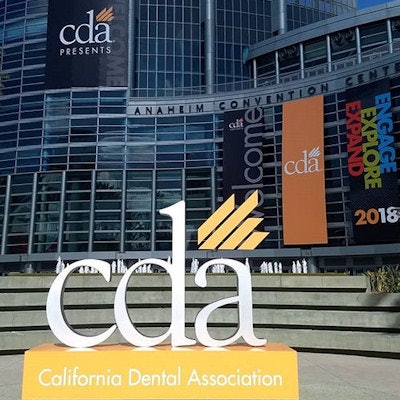
A patient claims to brush and floss, but the decay keeps coming back. What gives? Jean Creasey, DDS, spoke about caries risk factors, including not-so-obvious ones, at the 2019 California Dental Association's CDA Presents meeting in Anaheim, CA.
Dr. Creasey, a private practice dentist, emphasized the importance of looking for clinical and behavioral caries risk factors during an oral exam. This includes nonobvious clues, such as poor salivary flow or not taking regular lunch breaks.
"I really focus on assessing their past dental experience," Dr. Creasey, who is an associate professor at the University of Pacific's Arthur A. Dugoni School of Dentistry in San Francisco, told DrBicuspid.com. "If they've had a lot of experience with decay in the past, they're going to continue that. If a patient says, 'There's just nothing I can do about it,' that's your opportunity to really be a detective."
Signs of dental disease
Some caries risk factors are obvious, such as poor diet or oral hygiene habits, Dr. Creasey noted. But risk factors that are less well known also can have an impact.
One caries culprit is saliva, which includes salivary flow, quality, and the ability to buffer. In a normal patient, a pool of saliva should form under the tongue during the dental exam. If this doesn't happen, or if your mirror sticks to the patient's cheek, the patient may have low salivary flow.
"Salivary flow is affected by several medications, as well as age and time," Dr. Creasey said. "Generally, older people suffer from dry mouth. Someone who smokes a lot of cannabis might have a dry mouth. Same with people who take asthma medicine or fail to drink enough water."
The patient's saliva should not be thick, rope-like, or bubbly, Dr. Creasey noted. Sometimes, nervousness can make saliva thicker and less effective.
Bacteria, particularly the acid-producing kind, also can affect a patient's caries risk. While you can't tell what kind of bacteria patients have just by looking in their mouth, you can extrapolate from the evidence, Dr. Creasey said. For instance, someone with excellent oral hygiene but active decay and white spots may have excess acid-producing bacteria.
"If half the bacteria in your mouth are acid-producing, the acid-producing bacteria outcompete the other bacteria," she explained.
Finally, when patients eat can be just as much of a risk factor for caries as what they consume. It takes about 20 minutes for the mouth of someone with a normal salivary flow to return to healthy acidity, Dr. Creasey noted.
If patients have one soda but slowly sip it all day long, they're potentially doing more harm to their teeth than if they consumed the beverage all at once. Sipping and snacking throughout the day are particularly prevalent among food industry workers who may not have regular meal breaks.
"It's not just how much you consume but how frequently," Dr. Creasey said. "Sipping and snacking are things that create a long-term acid attack on the teeth. Timing is an underrated component of caries risk."
Importance of conversation
The conversation about a patient's oral health should be a dialogue, not a lecture, Dr. Creasey noted. In her own practice, she uses motivational interviewing, a technique based on the assumption that patients won't change unless they want to.
“Patients are their own experts about their own health.”
"Patients are their own experts about their own health," she said. "The motivation has to come from within them. It's listening to the way they talk about their teeth."
Dr. Creasey recommends asking patients open-ended questions about how they care for their teeth and gums. The key is to stay nonjudgmental and approach the topic from a collaborative mindset.
"Ask things that don't allow for yes or no answers," she said. "Give them a couple of choices for what they could do for their oral health. For instance, 'What would it look like if you drank the entire soda at lunchtime?' "
It's also important to realize that not all patients are going to care for their oral health in the way you might want. Some patients may say there's no way they're going to floss, and you have to accept them where they're at. However, you should also let them know the consequences of their behavior.
"I let them know maybe they'll get false teeth or implants," she said. "It's not a threat, just a reality. Paint a picture of what the future will likely look like. ... Maybe it makes sense for them to come into the practice more frequently."
Happy patients, happy practice
The shift to a prevention-focused practice can empower patients to own their oral health. It can also lead to practice success.
"Patients like knowing the practice is more interested in their best oral health than the bottom line," Dr. Creasey said.
In her experience, patients of prevention-focused practices tend to be satisfied with their care and eager to refer friends. Plus, prevention can be rewarding for the dental team.
"Putting your focus on prevention and risk assessment helps dental professionals prevent burnout because it helps you approach your job as more of an oral health coach instead of as a repair person," Dr. Creasey said. "Coming from that perspective really makes our job more rewarding."


















